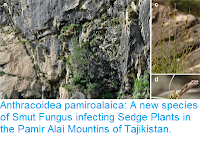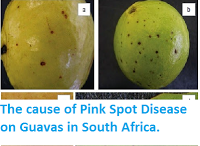Araneopathogenic Fungi, i.e. Fungi that infect Spiders, have been documented since at least the early nineteenth century. Since the opisthosoma (abdomen) of Spiders lacks the toughened exoskeleton seen in Insects, Spiders are more vulnerable to pathogenic infection by Fungi, and arenopathogenic Fungi tend to be less specialised than entomopathogenic Fungi, often being closely related to species which attack completely different organisms. Members of the genus Lecanicillium, are Ascomycote Fungi which parasitize a variety of organisms, including Plants, Arthropods, Nematodes and other Fungi.
In a paper published in the journal Phytotaxa on 21 April 2017, Wan-Hao Chen of the Institute of Entomology and the Institute of Fungus Resources at Guizhou University, and The Provincial Special Key Laboratory for Development and Utilization of Insect Resources in Guizhou Province, Yan-Feng Han and Zong-Qi Liang, also of the Institute of Fungus Resources at Guizhou University, and Dao-Chao Jin, also of the Institute of Entomology at Guizhou University, and The Provincial Special Key Laboratory for Development and Utilization of Insect Resources, describe a new, araneopathogenic, member of the genus Lecanicillium from Pine forests around Guiyang City in Guizhou Province, China.
The new species is named Lecanicillium araneogenum, where 'araneogenum' means 'growing on Araneus', in reference to the genus of the Spiders it was found growing on. The Fungus forms irregular cottony colonies, fatal to the Spider. This is the fourth species in the genus found growing on Spiders, and was confirmed as a new, separate, species by DNA extraction, PCR amplification and nucleotide sequencing.
Spider infected with Lecanicillium araneogenum. Scale bar is 10 mm.
See also...
Follow Sciency Thoughts on Facebook.







